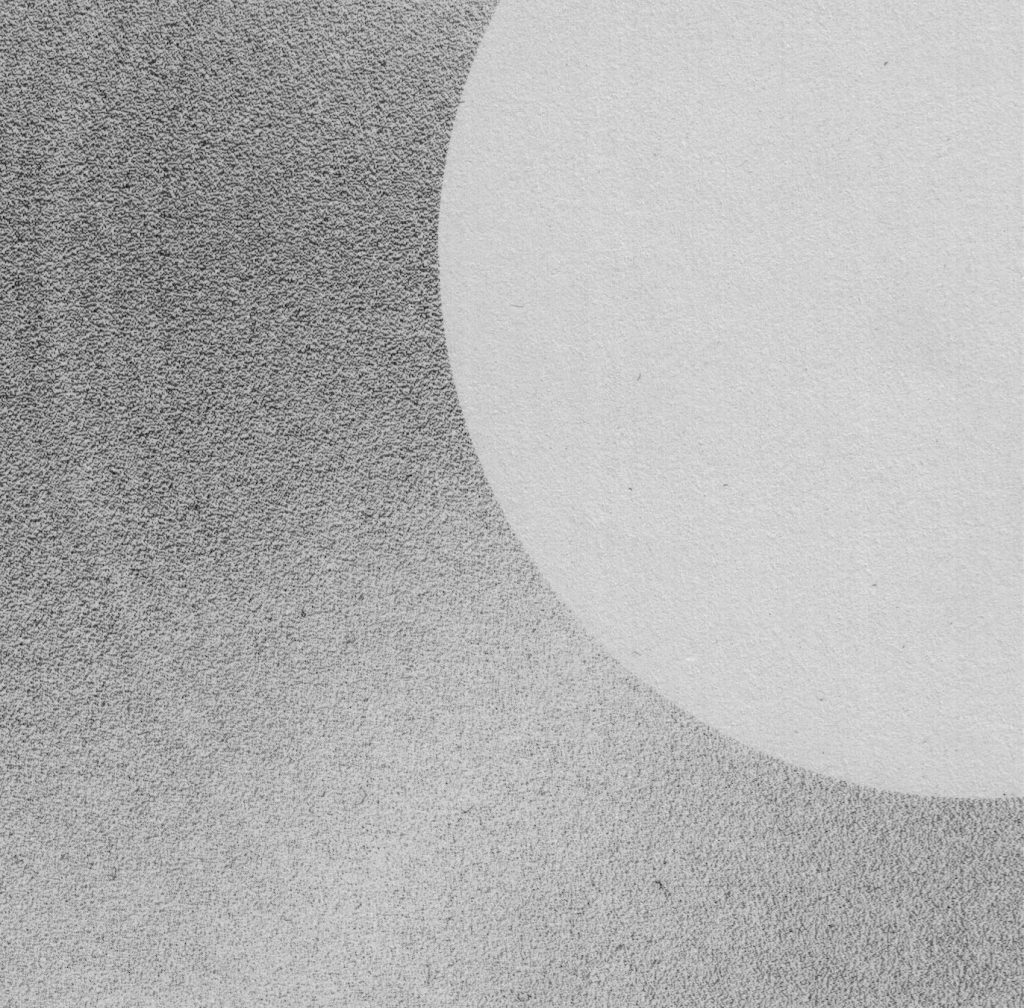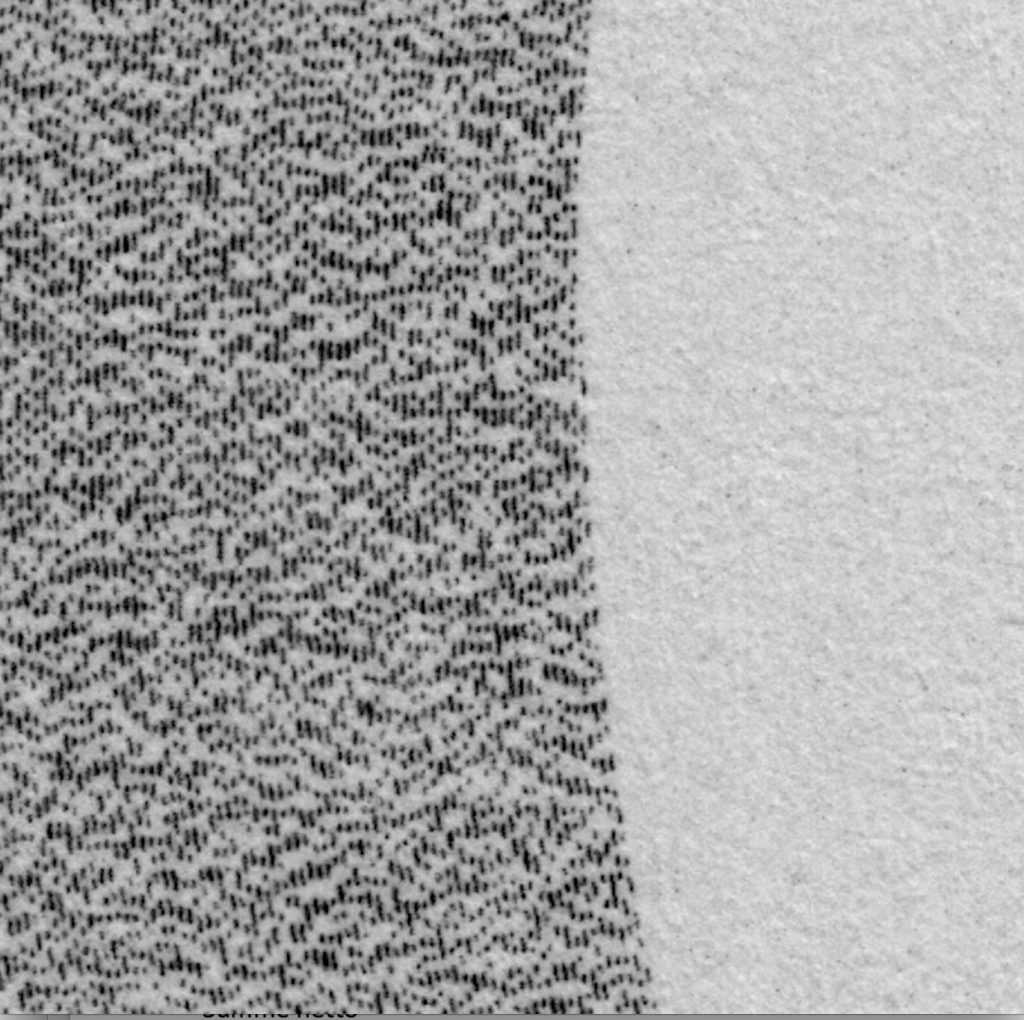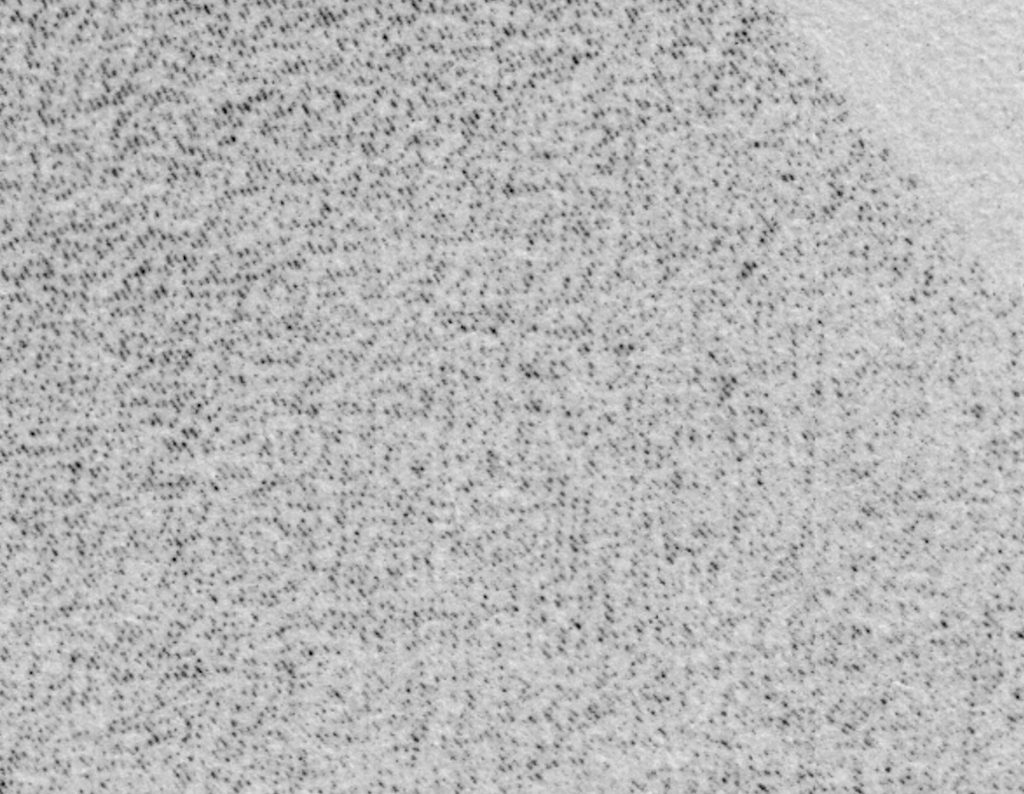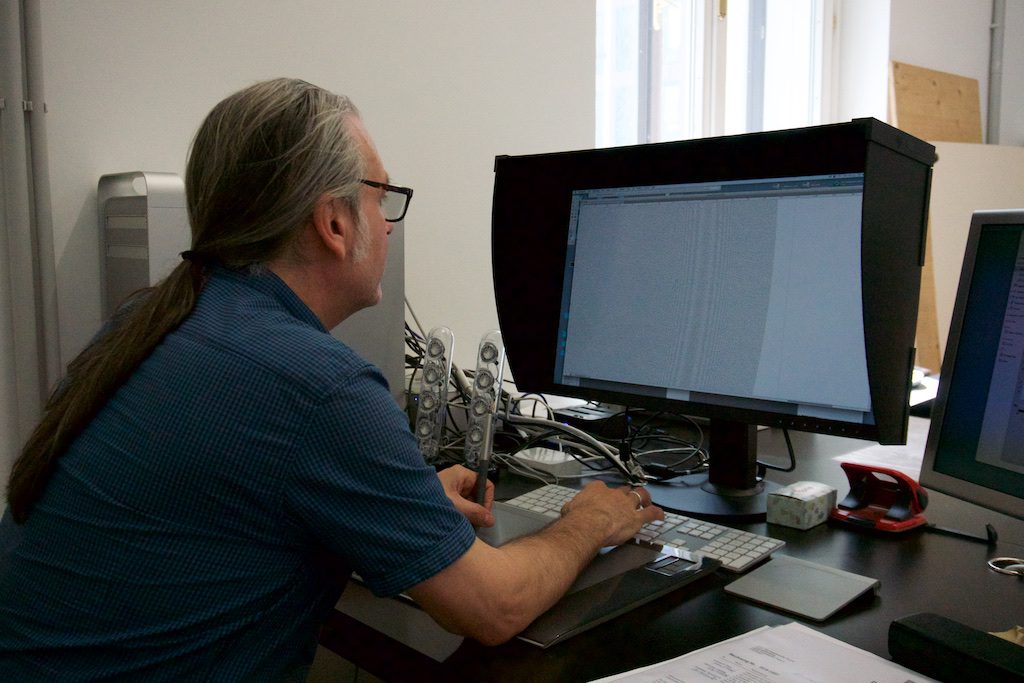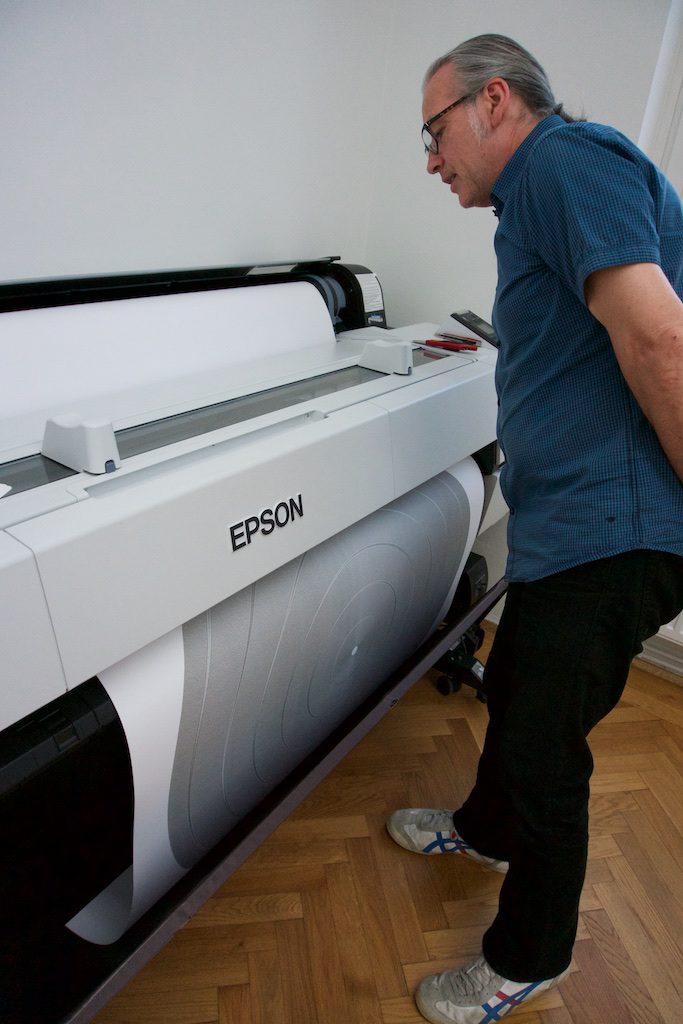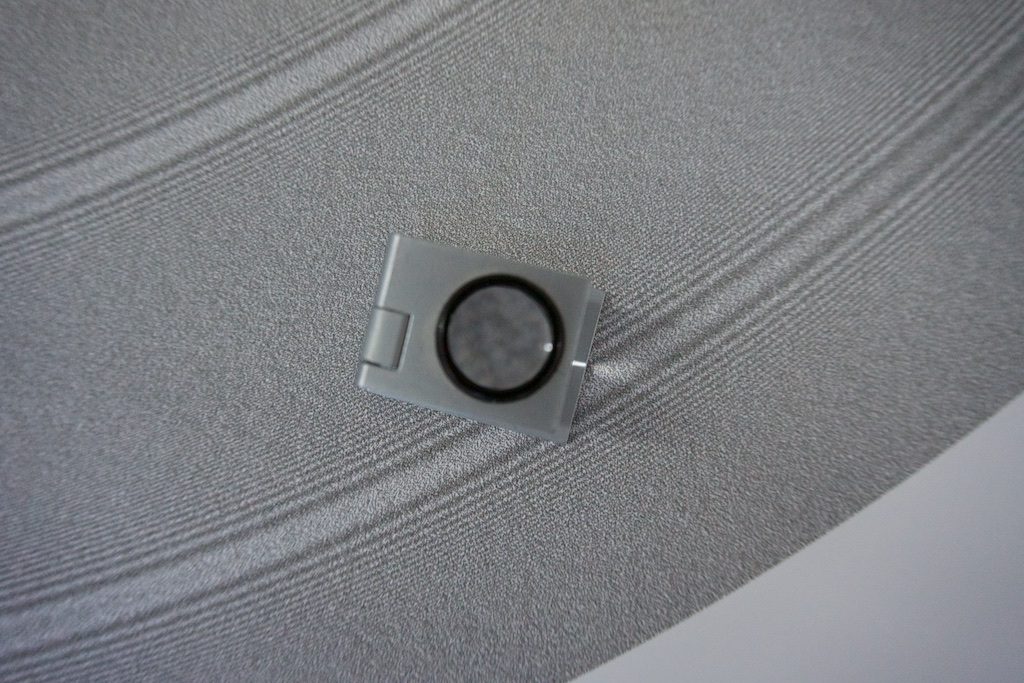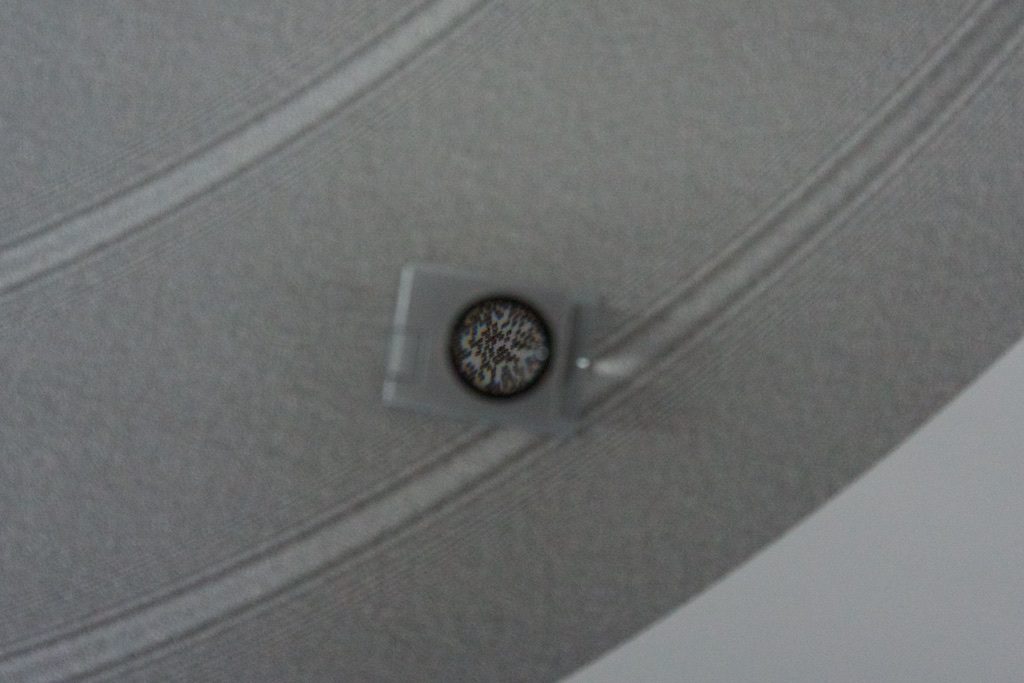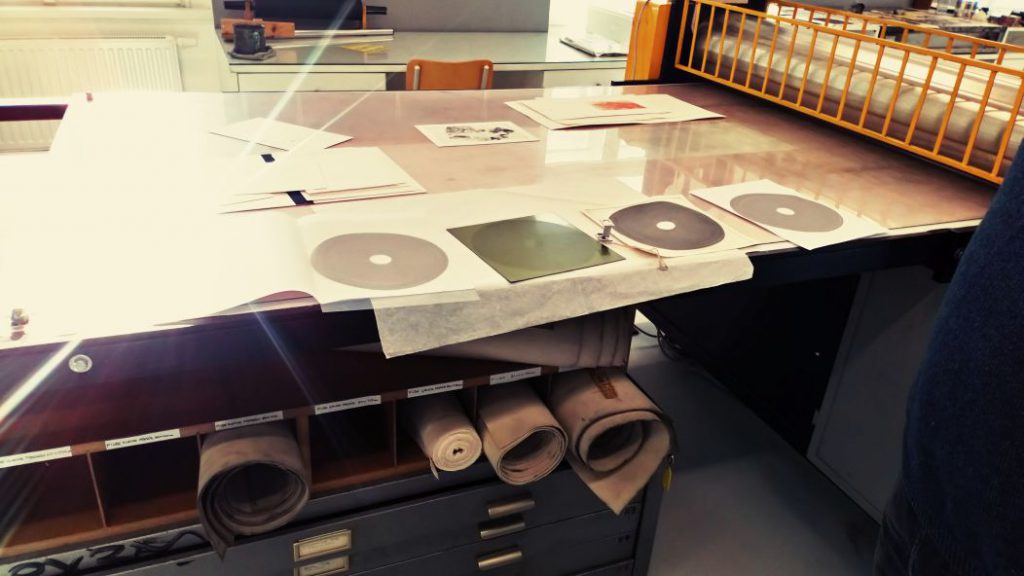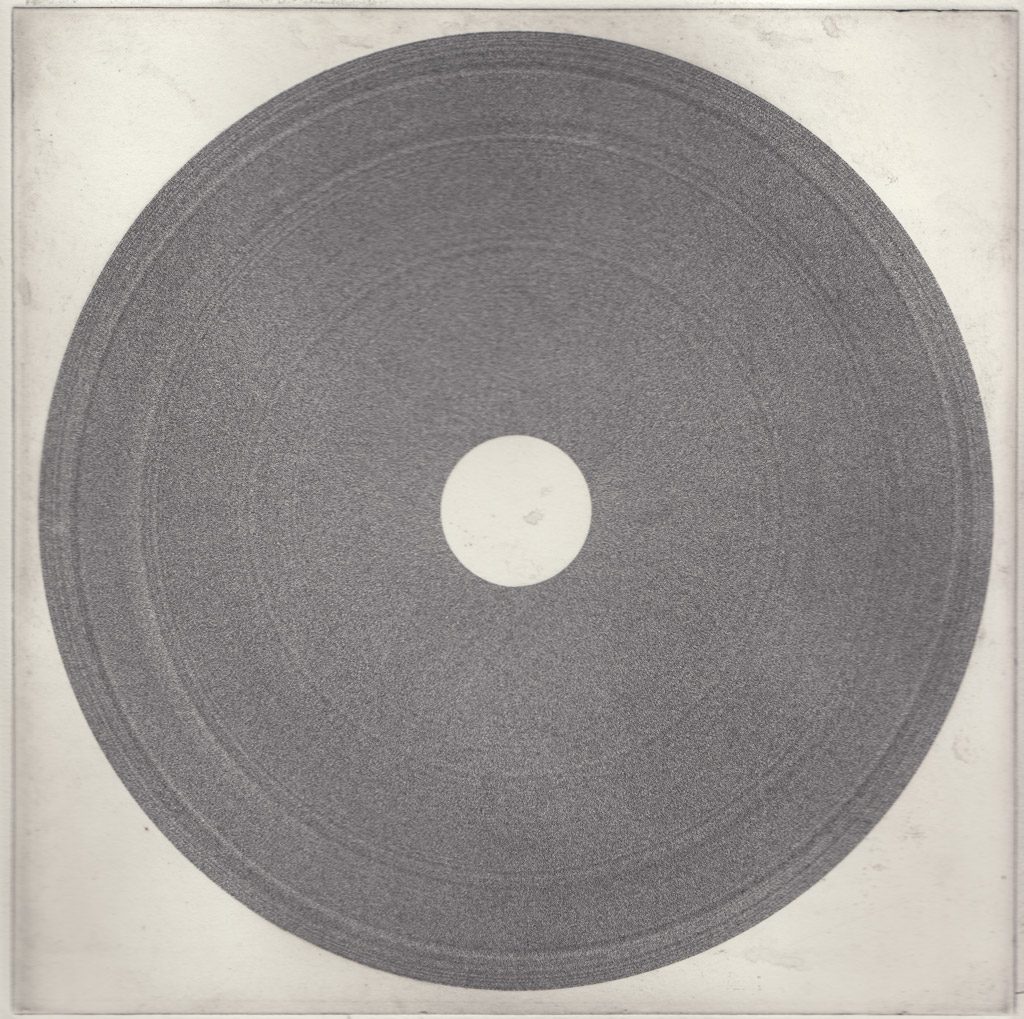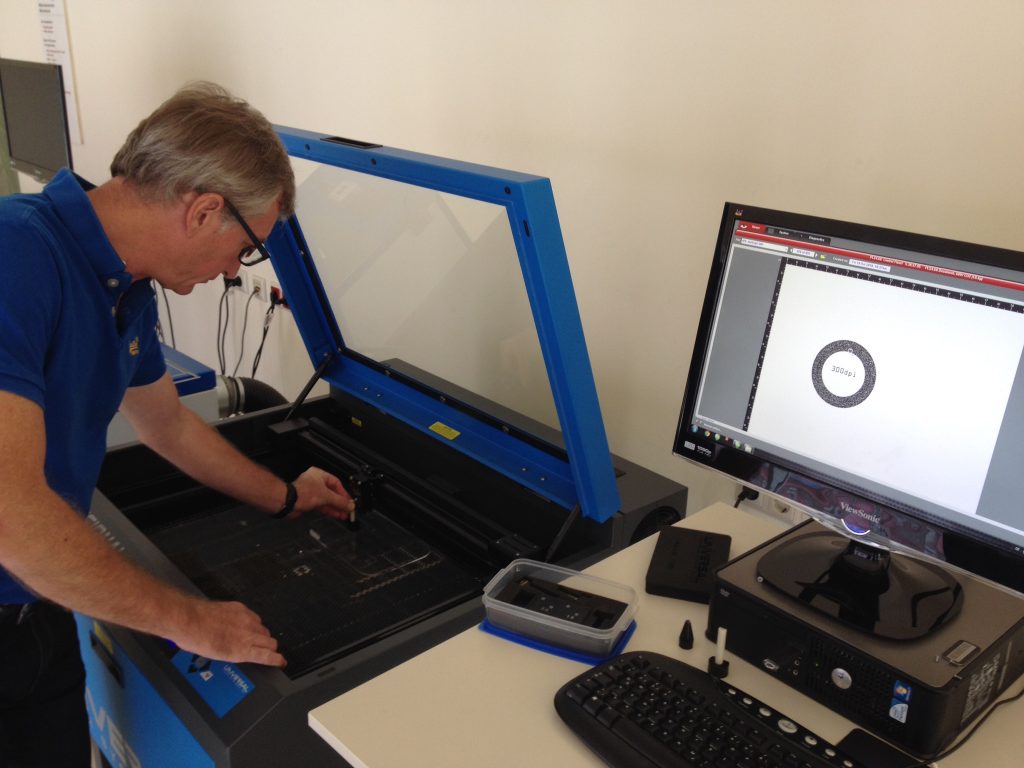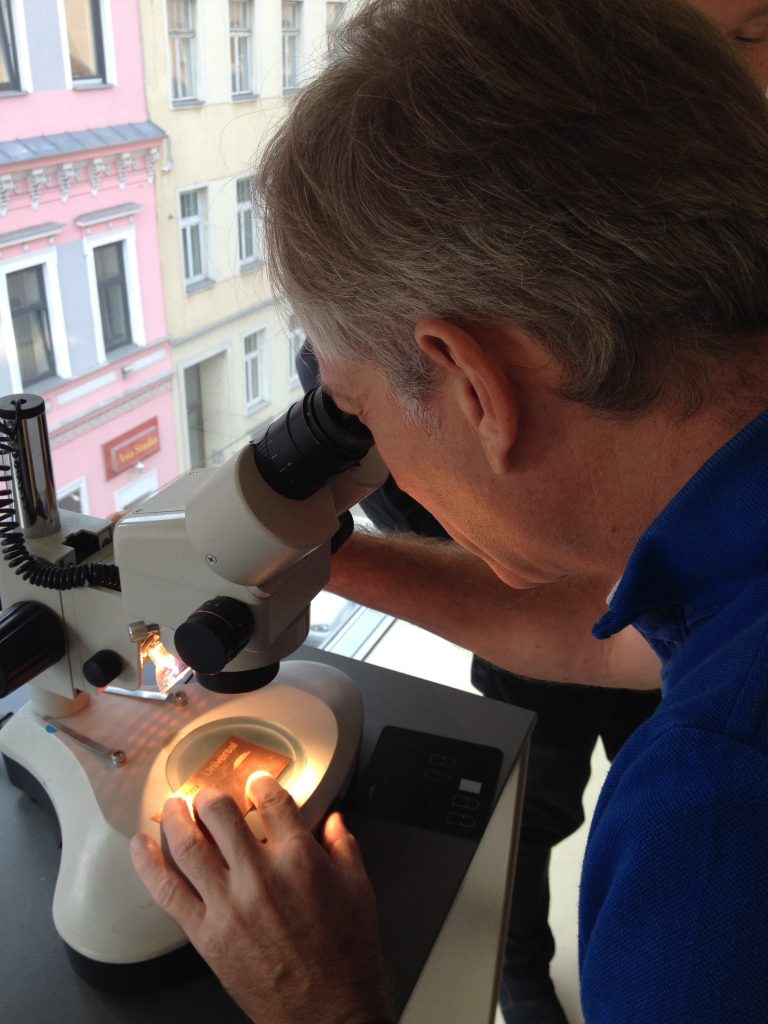1-bit audio, also trademarked as Direct Stream Digital (DSD) is a representation of digital audio as a stream of 1-bit digits, typically produced by use of a Sigma Delta Modulator (SDM). For an overview of the technique, we refer to Reefman and Janssen (2003).
For our intentions of observing the erosion processes of digital audio representations, 1-bit audio has the wonderful property that each bit of information has the same significance. Note that this is different from a multi-bit-word (PCM) representation where the loss of a bit has different effects depending on its position in a data word.
We are experimenting with representations of 1-bit audio on various physical information carriers, in electromagnetic or visual state. Specifically, we are working on printed or laser-engraved bit streams on various materials, then subjected to degradation processes.
1-bit audio
faust 1bit audio library at IFC2020
As announced earlier, we (Till Bovermann and Dario Sanfilippo) presented bitDSP, a library for the “faust” DSP programming language to integrate bit-based synthesis, at the International Faust Conference 2020.
Here you can find the corresponding paper as pdf. There’s also a video of the presentation. If you’re curious to use it yourself, feel free to give it a try!
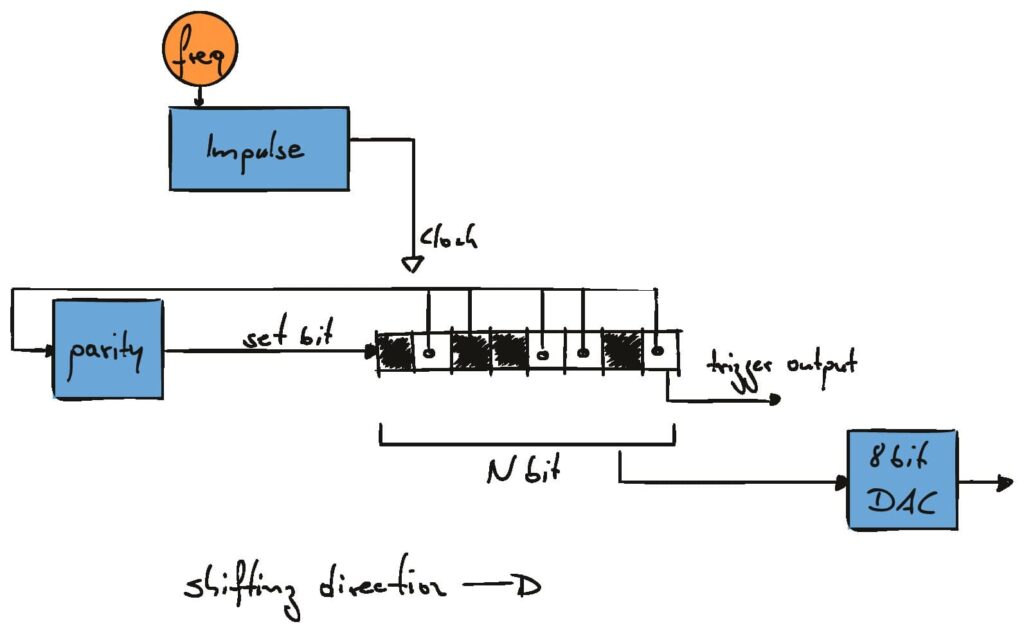
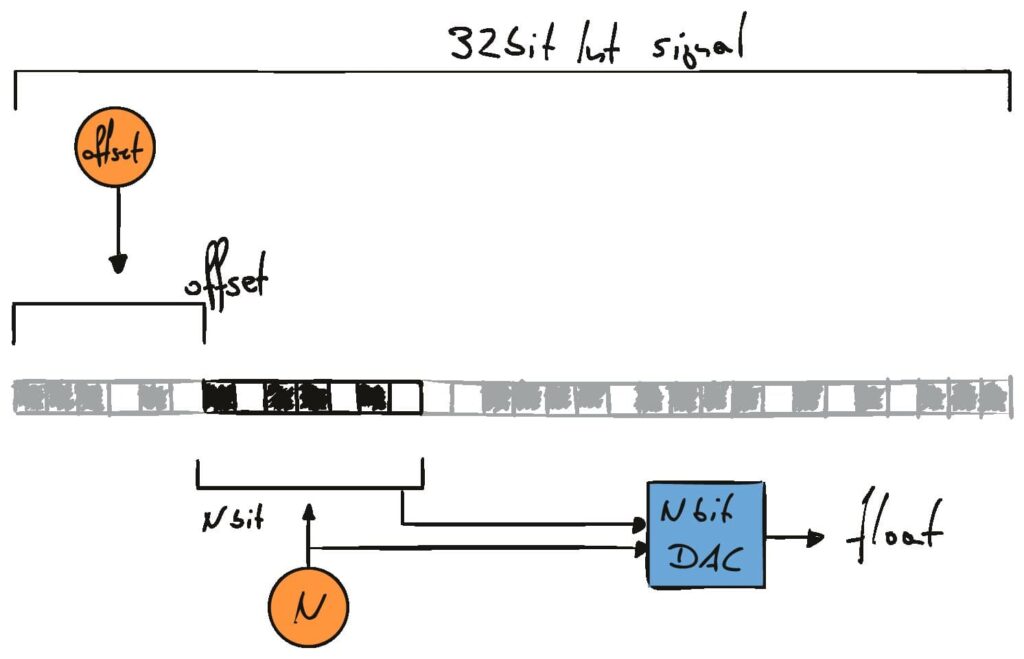


“Noise Shaping” at Musikprotokoll festival, October 8, Graz
Aloïs Yang & Andreas Trobollowitsch / Rojin Sharafi / Thomas Grill @ Hidden Dome
Thomas Grill gibt mit Noise Shaping einen Einblick in das Forschungsprojekt rotting sounds, das sich mit der Vergänglichkeit von digitalem Klang im sozialen, technologischen und zeitlichen Kontext beschäftigt. Ein zentraler Forschungsgegenstand ist die Repräsentation von Klang als 1-bit-Datenstrom, der die Brücke zwischen digitalen und analogen Signalen schlägt. Der Begriff Noise Shaping steht dabei für den voluminösen Rauschhintergrund, der als Träger der darin verborgenen Klänge verwendet wird. Aloïs Yang and Andreas Trobollowitsch spannen mechanisch erzeugte Klänge in ein komplexes digitales Feedback-System ein; found objects kommen ebenso zum Einsatz wie natürliche Substanzen und performative Raumvermessungen. Und Rojin Sharafi, die ursprünglich aus dem Iran kommt und seit einigen Jahren in Österreich lebt, widmet sich in ihrem Stück der „kulturellen Hegemonie, kulturellen Hybridität und dem kulturellen Überleben“, jenen Stimmen also, die im Kampf um die kulturelle Vorherrschaft gezielt unterdrückt werden. Für ein immersives Klangerlebnis bei Hidden Dome sorgt die 50-Kanal Ambisonics Audioanlage des Dom im Berg, für die die drei Auftragswerke konzipiert wurden.
October 8, 19:30pm
Dom im Berg, Schloßbergplatz, A-8010 Graz
paper at IFC 2020
We will present our work on 1-bit audio at the International Faust Conference 2020 taking place on 1.12.2020 and 2.12.2020 at the Maison des Sciences de l’Homme Paris Nord. Our presentation will be about the bitDSP faust library developed by Till Bovermann and Dario Sanfilippo.
Performance at Sound Campus, Ars Electronica Festival Linz, September 11
Thomas Grill, Till Bovermann and Kathrin Hunze will perform “merge and dissolve”, an audiovisual performance concept in the SOUND CAMPUS program, part of the Ars Electronica Festival 2020.
This performance involves three interactants, two predominantly working in the audio domain (Thomas Grill and Till Bovermann) and one focusing on a visual counterpart (Kathrin Hunze). We generate and exchange streams of 1-bit audio, a signal representation with properties of both the digital and analog domain that we have already been investigating in the artistic research project “Rotting sounds – Embracing the temporal deterioration of digital audio” (FWF PEEK AR445-G24). With simple switchboard matrix devices, we channel such bit streams between the individual performers and through simple processing modules, like delays, logical operators, etc., generating feedback and interferences on the way. These phenomena are made audible and are also mirrored by a visual representation of particle streams, forming directed jets and point cloud aggregations.
11. September 2020 – 20:10 – 20:35
Hauptplatz 6, Glashörsaal D (H6.DG.04)
4020 Linz, Austria
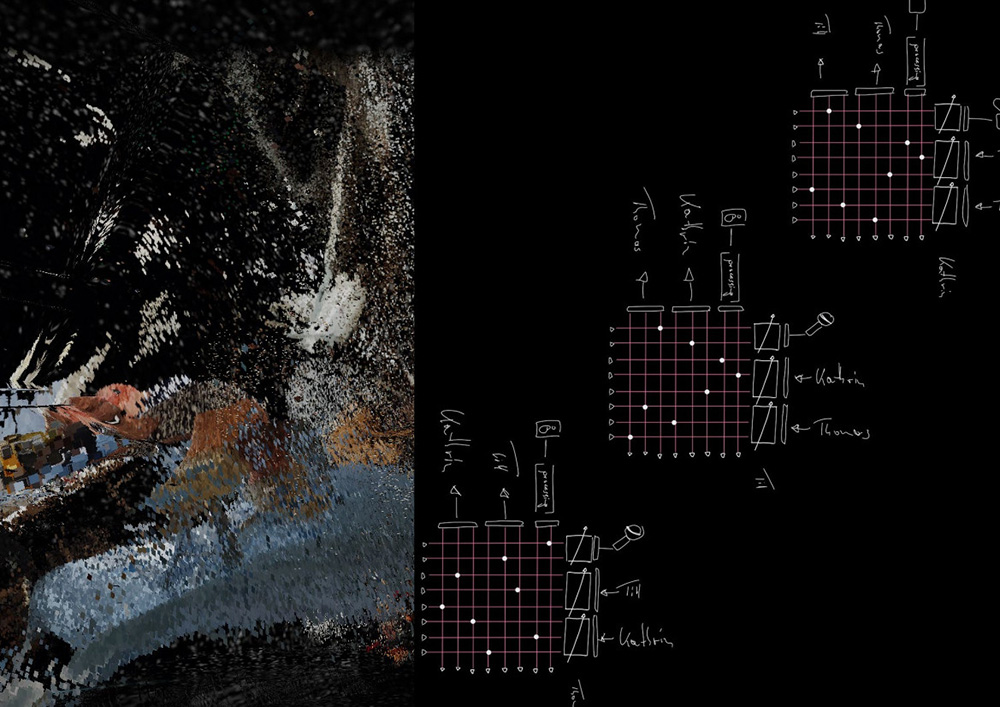
1-bit audio: Testing audio hardware
For an upcoming performance at the Ars Electronica Festival 2020 SOUND CAMPUS, we are testing hardware to interconnect 1-bit audio streams.
For that purpose, we are using an STM32F4 Discovery Board to generate 1-bit audio streams, sent through a Future Sound Systems MTX9 point pin matrix (Figure 1) as often found in modular synthesis systems.
The software used on the STM board to efficiently generate 1-bit audio streams using DMA transfer over an SPI interface is an offspring of our DADA hardware development efforts.
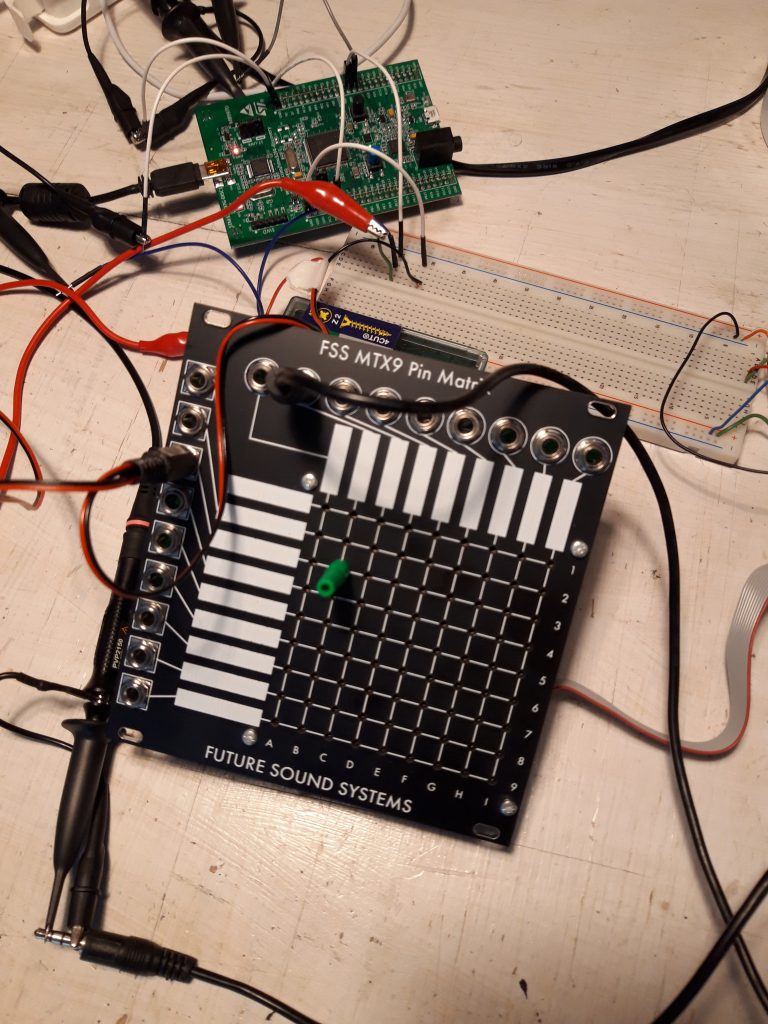
The FSS MTX9 can be used as passive hardware (only 1-to-1 connections), or using the MTX9A buffer board to sum over input busses.
In passive mode (Figure 2), the bandwidth is sufficient to come close to 1 MHz bit rate which allows 32-fold oversampling at usable PCM audio rates.
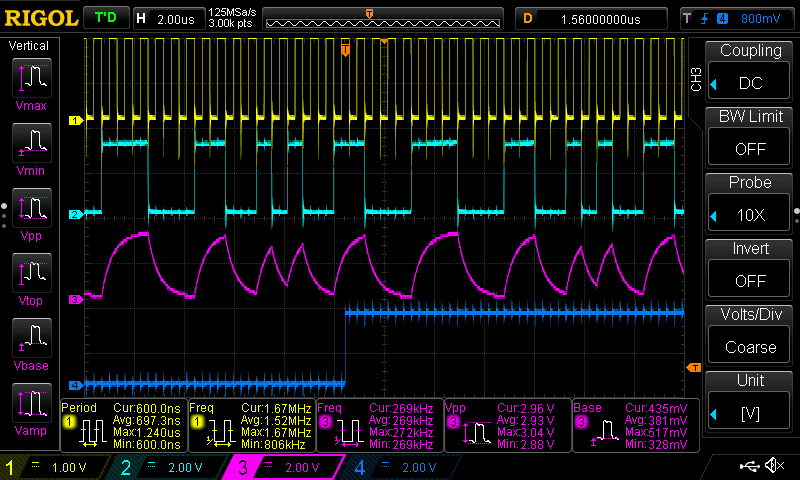
For active mode (using the buffer board MTX9A, Figure 3), the hardware introduces low-pass filtering, reducing the audio bandwidth to around 100 kHz. This is good enough for high quality analog audio, but not for 1-bit digital audio at high bit rates.
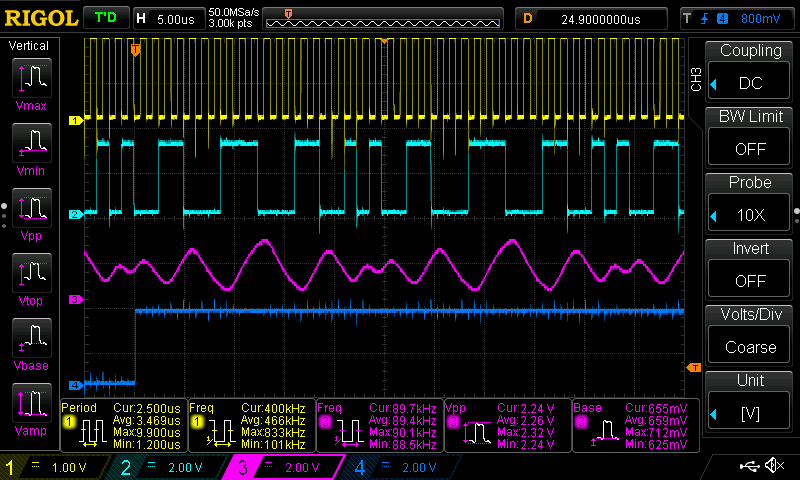
Clearly, it must be noted that the summing function over inputs is not strictly meaningful for 1-bit signals, where some kind of post-processing needs to bit applied to return to single bits.
Printing new 1-bit audio object “Reference Tone”
For the upcoming exhibition UNDERSTANDING ART AND RESEARCH at the Museum of Applied Arts (MAK), we today printed the new prototypical audio object Reference Tone at the Digital Photography Lab at the University of Applied Arts.
It is a variation on the large-scale 1-bit audio print concept, similar to Midnight Song, as exhibited in our Auditorium of Rotting Sounds. Reference Tone represents a 1 kHz -3 dBFS sine tone at 44.1 kHz PCM sample rate, converted to a 1-bit DSD encoding with 64-times oversampling.
The director of the lab, Josef Schauer-Schmidinger supervised the printing of the 250 MB programmatically generated PDF file at 150 dpi bit structure size. The printed diameter of 100 cm contains approximately 30 Million bits, equivalent to about 10 seconds of very high quality audio.
1-bit audio printing at the University of Applied Arts Vienna
Today, we visited the gravure printing workshop at the Institute for Graphics and Printmaking at the University of Applied Arts in Vienna. The staff around Veronika Steiner and Attila Piller showed us their printing procedure and the possibilities in terms of materials, size and achievable resolution.
Obviously, one of the important limiting factors is the quality of the rasterization which is usually done with a laser printer on transparent film. This film is used to expose the polymer printing plate with ultraviolet light. The non-exposed parts of the plate are washed away, making room for the print color.
On our quest for maximum resolution of the photomaster, we also visited Josef Schauer-Schmidinger at the workshop for Digital Photography. Although they specialize in digital photography, we will have the possibility to reproduce large-scale high-resolution ink prints (160 cm width) onto 8″x10″ film with an analog Sinar camera, once their darkroom is installed in a few weeks. The target resolution should be more than 2400 dpi.
1-bit audio laser engraving
Today, we have gained new knowledge about laser engraving thanks to the great guys at Universal Laser Systems Vienna.
The laser engraving expert convinced us that a target resolution of 1000 dpi is not easily attainable due to restrictions of laser focus, positioning accuracy and, above all, material constraints.
Nevertheless, we will research further in this direction, since laser engraving allows the application of visual representations of audio on various interesting materials.
